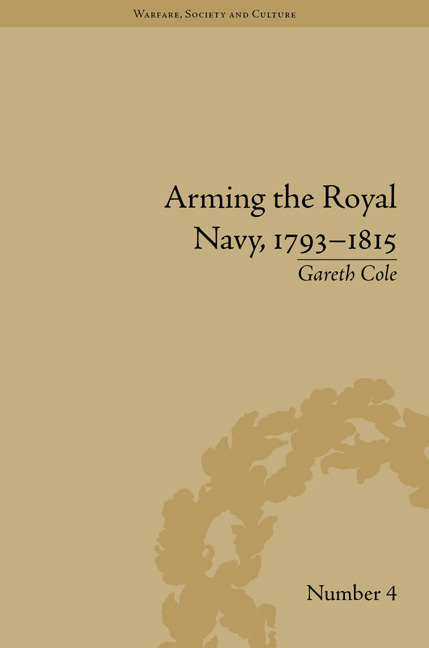Book contents
- Frontmatter
- CONTENTS
- Acknowledgements
- List of Figures and Tables
- Introduction
- 1 The Office of Ordnance and Its Mode of Operation
- 2 Ordnance Relationships with Other Government Departments
- 3 Relations between the Ordnance and Its Contractors
- 4 The Supply of Gunpowder to the Royal Navy
- 5 The Supply of Iron Ordnance to the Royal Navy
- 6 Ordnance Shipping
- 7 The Operations of the Ordnance Outports
- Conclusion
- Notes
- Works Cited
- Index
Introduction
- Frontmatter
- CONTENTS
- Acknowledgements
- List of Figures and Tables
- Introduction
- 1 The Office of Ordnance and Its Mode of Operation
- 2 Ordnance Relationships with Other Government Departments
- 3 Relations between the Ordnance and Its Contractors
- 4 The Supply of Gunpowder to the Royal Navy
- 5 The Supply of Iron Ordnance to the Royal Navy
- 6 Ordnance Shipping
- 7 The Operations of the Ordnance Outports
- Conclusion
- Notes
- Works Cited
- Index
Summary
In December 1794, Charles Middleton, erstwhile Comptroller of the Navy, believed that ‘the exertion of the fleet in a great measure depends on the diligence and punctuality of these boards [The Navy Board, Victualling Board, Sick and Hurt Board and the Ordnance Board]’. The Ordnance was, thus, one of the integral elements in the successful prosecution of the war by the Navy. Of these four, three came under the responsibility of the Admiralty; the only one that did not was the Ordnance.
The Office of Ordnance had a long history, much of which has been neglected by historians. Tomlinson gives a history of the Ordnance from its earliest ancestry in the fourteenth century until the early eighteenth century and he gives a detailed study of the period under the Restoration Stuarts. Jenny West also gives a brief history up until the middle years of the eighteenth century. Throughout these years, until its abolition in 1855, the Ordnance was responsible for the contracting (or manufacturing) of stores and their subsequent supply to the army and the navy.
Of the Ordnance, Tomlinson writes: ‘The failure of historians to consider the department in depth in the late seventeenth and early eighteenth centuries is surprising. For in this period of intermittent, if not incessant, warfare, the Ordnance Office had a vital role to play in the defence of the kingdom’. Much the same could be said of the late eighteenth and early nineteenth centuries.
- Type
- Chapter
- Information
- Arming the Royal Navy, 1793–1815The Office of Ordnance and the State, pp. 1 - 10Publisher: Pickering & ChattoFirst published in: 2014



